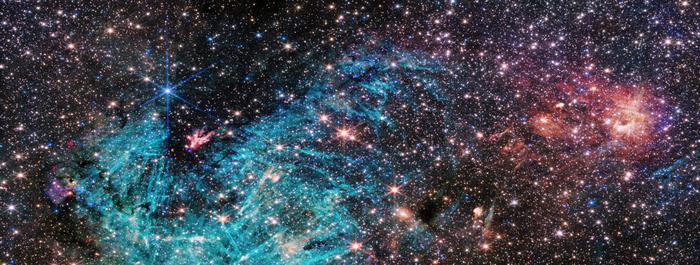
Our Solar System lives in a nice suburb of the Milky Way. Sitting about 25,000 light years from the galactic center, we’re in a good place to view what’s happening in the core district, but far enough out that things are less crowded and wild. But we’re not so far out that there aren’t good building materials. Our solar system really did land in the right location, and isn’t it all about location, location, location?
A lot of what we know about the core comes from seeing the shocks created by past violent flares and the twinkles of radio emission that pass through the dense crowd of dusty structures. Also able to sometimes pass through this material is infrared light. A new image from the JWST pierces through – mostly – to reveal 500,000 stars in the Sagittarius C region.
According to lead observer Samuel Crowe, “There’s never been any infrared data on this region with the level of resolution and sensitivity we get with Webb, so we are seeing lots of features here for the first time.”
For instance, there are weird, needle-like cyan lines in the JWST image, and these come from ionized hydrogen gas doing things we just haven’t seen before.
But that’s why we science – to try and understand new things – and science we shall.
